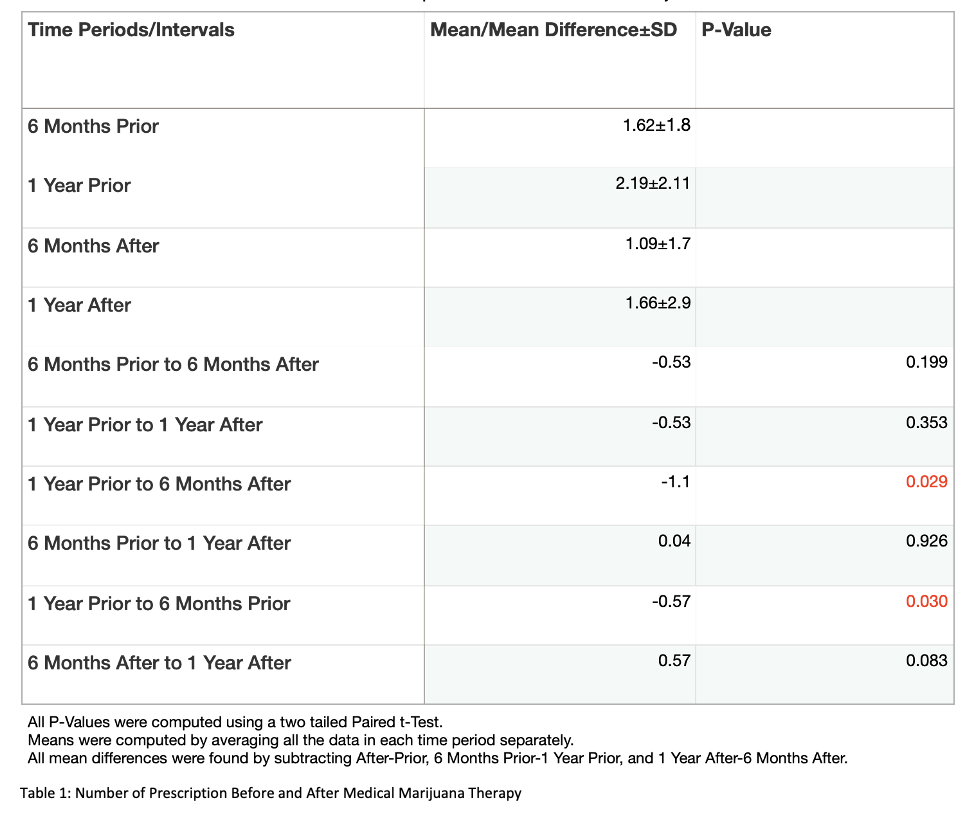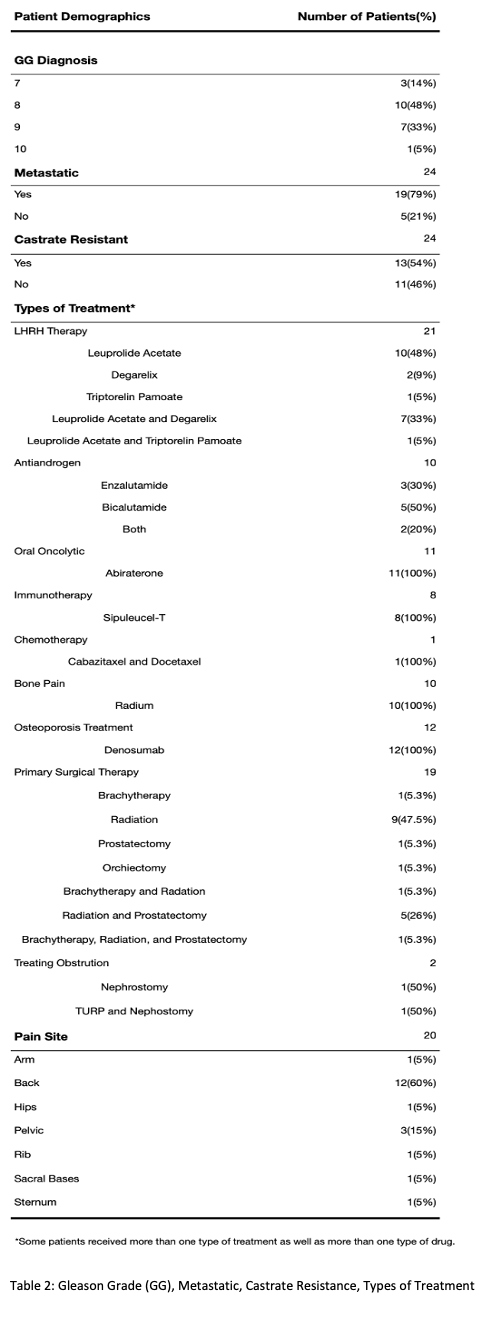Back
Poster, Podium & Video Sessions
Moderated Poster
MP27: Prostate Cancer: Advanced (including Drug Therapy) I
MP27-20: Analyzing Medical Marijuana's Effect on Narcotic Pain Medication Consumption in Patients with Prostate Cancer
Saturday, May 14, 2022
10:30 AM – 11:45 AM
Location: Room 222
Young Son*, Benjamin Fink, Katelyn Klimowich, Stratford, NJ, Ian Madison, Philadelphia, PA, Julia Scali, Dayna DeVincentz, Paul Chialastri, Thomas Mueller, Gordon Brown, Stratford, NJ

Young Son, DO
Resident
Jefferson New Jersey
Poster Presenter(s)
Introduction: Narcotic drugs are often used for pain control in cancer patients but they can be associated with substance use disorder and other unwanted side effects. Medical Marijuana has been approved for specific indications related to pain control in cancer patients. Our objective is to determine if medical marijuana therapy can decrease opioid prescription usage in prostate cancer patients.
Methods: We performed a retrospective chart review on a sample of patients with a diagnosis of prostate cancer and having been prescribed medical marijuana from our practice. The New Jersey Drug Control Reporting System was used to determine the number of narcotic prescriptions filled from one year prior to one year after medical marijuana was prescribed. The patients were enrolled in medical marijuana therapy by meeting the New Jersey Criteria including physician-patient relationship greater than one year or has been assessed for debilitating medical conditions on at least four visits. Debilitating medical conditions included anxiety, cancer, chronic pain, and terminal illness with a prognosis of less than 12 months to live.
Results: A total of 24 patients were included in the sample. Narcotic prescriptions filled at one year before and six months after starting medical marijuana averaged 2.19±2.11 vs. 1.09±1.09 (p=0.029). At one year prior to six months prior starting medical marijuana, opioid prescription rate was 2.19±2.11 vs. 1.62±1.8, respectively (p =0.03) (Table 1). 54% of patients had castrate resistant and 79% of patients had metastatic prostate cancer prior to starting medical marijuana therapy. Gleason grade, different modalities of treatment and pain sites were included (table 2).
Conclusions: We conclude that there was a decrease in narcotics prescription filling by two fold six months after starting medical marijuana therapy compared to one year prior to starting medical marijuana therapy. However, there was no difference in opioid prescription filling rate one year prior to one year post medical marijuana therapy.
Source of Funding: None


Methods: We performed a retrospective chart review on a sample of patients with a diagnosis of prostate cancer and having been prescribed medical marijuana from our practice. The New Jersey Drug Control Reporting System was used to determine the number of narcotic prescriptions filled from one year prior to one year after medical marijuana was prescribed. The patients were enrolled in medical marijuana therapy by meeting the New Jersey Criteria including physician-patient relationship greater than one year or has been assessed for debilitating medical conditions on at least four visits. Debilitating medical conditions included anxiety, cancer, chronic pain, and terminal illness with a prognosis of less than 12 months to live.
Results: A total of 24 patients were included in the sample. Narcotic prescriptions filled at one year before and six months after starting medical marijuana averaged 2.19±2.11 vs. 1.09±1.09 (p=0.029). At one year prior to six months prior starting medical marijuana, opioid prescription rate was 2.19±2.11 vs. 1.62±1.8, respectively (p =0.03) (Table 1). 54% of patients had castrate resistant and 79% of patients had metastatic prostate cancer prior to starting medical marijuana therapy. Gleason grade, different modalities of treatment and pain sites were included (table 2).
Conclusions: We conclude that there was a decrease in narcotics prescription filling by two fold six months after starting medical marijuana therapy compared to one year prior to starting medical marijuana therapy. However, there was no difference in opioid prescription filling rate one year prior to one year post medical marijuana therapy.
Source of Funding: None



.jpg)
.jpg)